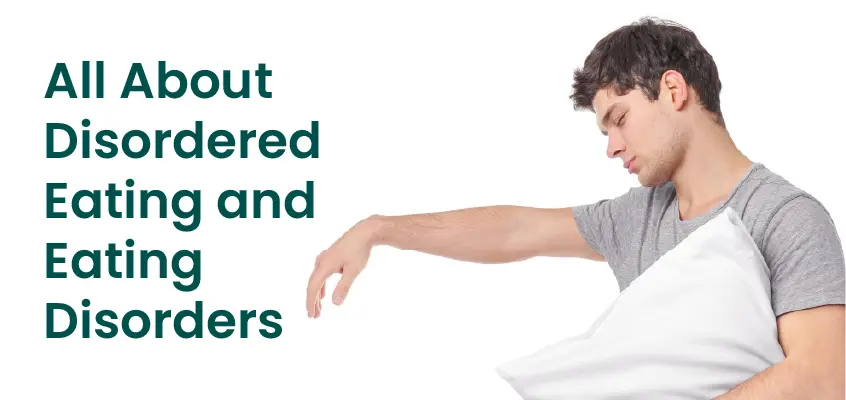What is somnambulism?
Somnambulism, commonly known as sleepwalking, is a mental disorder in which an individual gets up and walks around while in a deep sleep. They may even display complex behaviours such as getting dressed, eating, or driving a vehicle during this state. It isn’t easy to wake individuals who are sleepwalking, and they usually don’t recall having done anything during their sleep.
Read on to learn about the symptoms, causes and treatment options for sleepwalking.
Symptoms of somnambulism
Sleepwalking usually happens when the individual is in a deep sleep, usually during the first few hours of falling asleep. People who walk in their sleep may look and behave as if they are partially awake. Somnambulism can present with various symptoms.
A person who is sleepwalking may:
- Perform different activities while in a deep sleep. It includes walking, running, or going outside. They may also exhibit complex behaviours such as getting dressed, eating, or even driving a car.
- Have a glazed expression, may not show any emotions and may stare aimlessly.
- Not legibly respond to others during a sleepwalking episode.
- Be difficult to wake up and may display violent behaviours towards the person trying to wake them up.
- Be confused and disoriented for a while after being awakened.
- Have no memory of the sleepwalking episode the next day.
- Have sleep terrors and disturbed sleep.
Causes and risk factors of somnambulism
Sleepwalking affects around 2-3% of adults, which is much more common in children. Several genetic, psychological and environmental factors can result in sleepwalking.
- Biological and genetic factors: Sleepwalking has a strong genetic link and can run in families. If one or both parents are prone to sleepwalking, their child has a higher risk of developing this disorder.
- Age: Sleepwalking is more common in children than in adults. Somnambulism in adults is usually related to other mental disorders.
- Psychological factors: Chronic stress, anxiety, depression, or other mental health disorders can result in sleepwalking.
- Environmental factors: Changes in the sleeping environment, erratic sleep schedule and sleep deprivation can cause sleepwalking. Substance abuse is another contributing factor.
- Medical disorders: Disorders such as sleep apnea can cause somnambulism. Brain injuries, cardiovascular health issues and other illnesses can also result in sleepwalking.
Treatment of somnambulism
Doctors prescribe treatments for sleepwalking based on the severity of the disorder. Two standard treatment options are psychotherapy and medications. Psychotherapy and lifestyle changes are the first line of treatment for sleepwalking, and Medications are prescribed only when these approaches do not work.
Psychotherapy
Psychotherapy for somnambulism includes guided therapeutic imagery, relaxation techniques, and anticipatory awakenings. These are the preferred long-term treatment options for sleepwalking.
An experienced behavioural therapist can help the individual relax using mental imagery and relaxation techniques. These methods help evoke feelings of peace and relaxation and reduce mental distress. As a result, the quality of sleep improves, and the chances of sleepwalking decrease.
Anticipatory awakening is another treatment option for somnambulism. In this, the person who sleepwalks is woken up approximately 15 minutes before they usually start to sleepwalk. Being awake during this time can help reduce the number of sleepwalking episodes.
Medications
Medications are a last resort for somnambulism when ineffective lifestyle changes and therapy are. Medication is necessary if the individual exhibits violent symptoms while sleepwalking and is at risk of injuring themselves or others.
Oral medications such as benzodiazepines and antidepressants help regulate sleep and reduce the number of sleepwalking episodes. These medications are usually taken for a few weeks, and they can have side effects and should only be taken under the guidance of a doctor.
How to prevent somnambulism
There is no guaranteed method to prevent sleepwalking. However, we can make lifestyle changes that reduce the risk of somnambulism and other sleeping disorders. Here are some self-care techniques to prevent sleepwalking:
- Get plenty of rest regularly. It will help avoid sleep deprivation and insomnia and reduce the risk of developing sleep disorders.
- Establish a regular sleeping routine. A warm bath and meditation before bed can help calm the mind and improve sleep.
Ensure the sleeping environment is safe and relaxing. The room temperature should be comfortable.
- Try to reduce stress, anxiety or depression. It will help relax the mind and regulate sleep cycles.
- Avoid the consumption of alcohol and recreational drugs. These can alter brain chemistry and increase the chances of sleepwalking.
Can meditation help prevent somnambulism?
Meditation is an excellent way to relax the mind and body. Meditating before sleeping can help soothe the mind and improve sleep, and this will help reduce the risk of developing somnambulism and other sleep disorders.
Consult an experienced therapist to clarify doubts and help with guided sleep meditation. Meditation can have a substantial positive impact on our journey to achieve better sleep.
Conclusion
Getting up and walking while sleeping can seem quite intimidating to people. However, somnambulism is a common sleeping disorder and is more prevalent among children, and the condition often resolves on its own as the child grows up.
Sleepwalking in adults can indicate a sleeping disorder. Fortunately, there are now several effective treatment options to manage sleepwalking. Consult a healthcare professional to find the most suitable treatment options for this disorder.
We should also focus on our holistic well-being and aspire to achieve a healthy and active lifestyle to combat somnambulism. It can help prevent the onset of the disorder and reduce the chances of its progression. It is essential to take steps to improve our mental health. Therapy can help reduce anxiety, stress and depression, which will help us sleep better.
A small test to achieve a bigger dream of making you happy. Take a FREE test on our APP
References
https://academic.oup.com/brain/article/128/5/1062/278523
https://www.mayoclinic.org/diseases-conditions/sleepwalking/symptoms-causes/syc-20353506
https://www.verywellhealth.com/sleepwalking-overview-4581269





